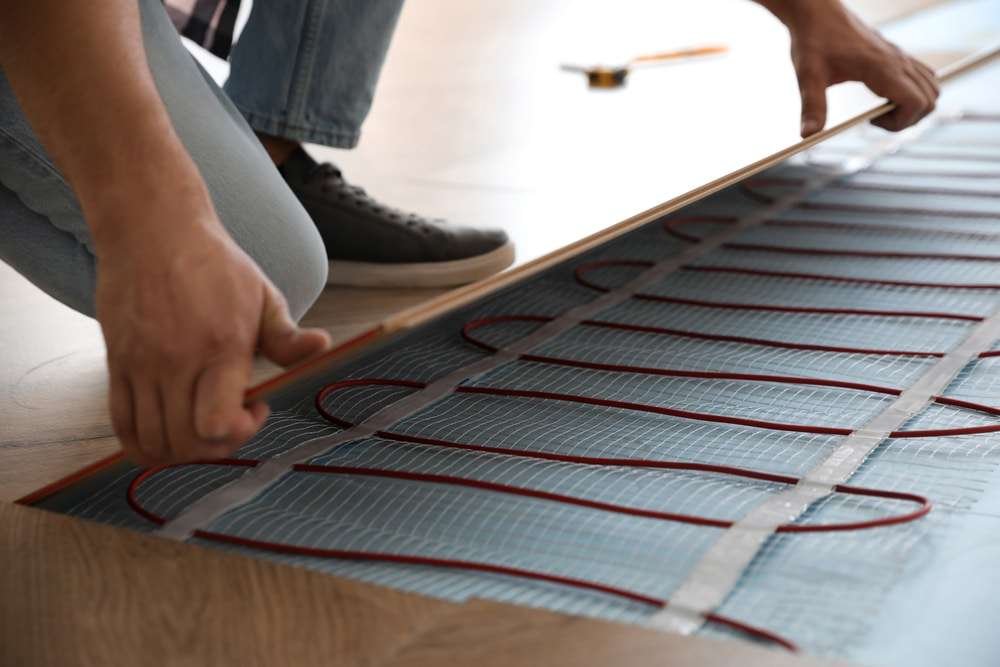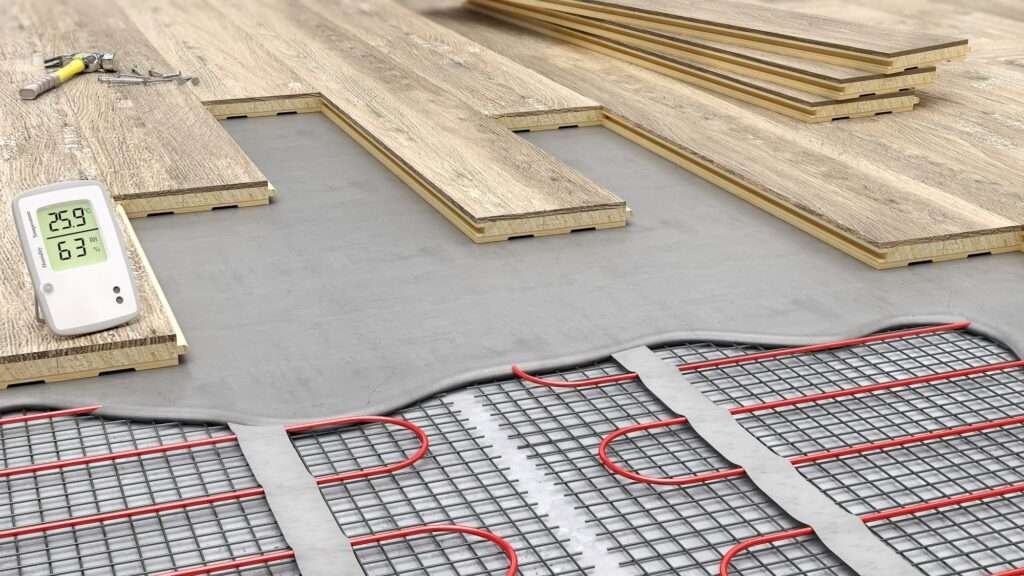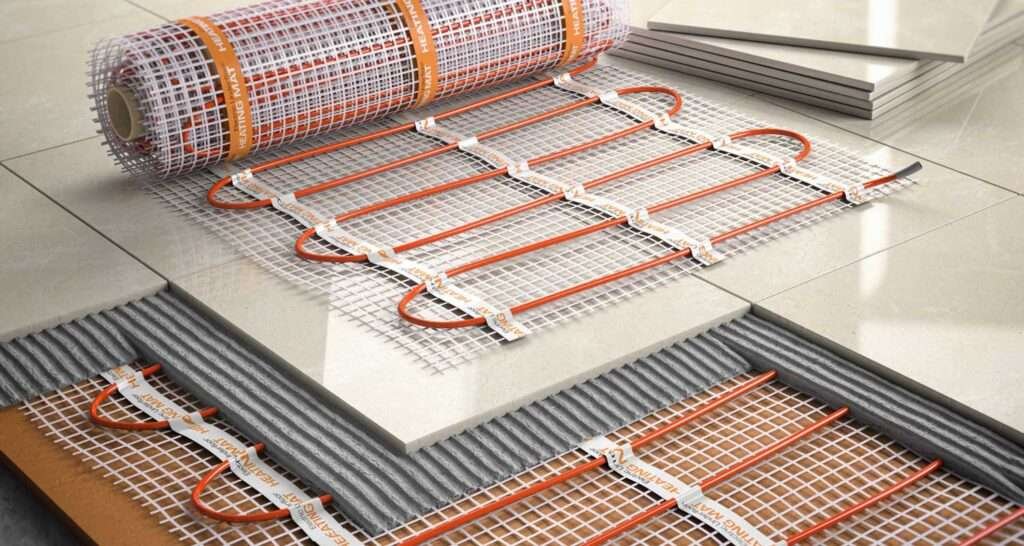Installing electric underfloor heating enables you to warm the space where you install it very easily, eliminates cold spots, and does not harm the environment when installed under tile or hard floor. So, if there is always a feeling you need your home to look a bit more luxurious as well, installing electric underfloor heating is an energy-efficient means of heating and will have you enjoying one of these benefits sooner than later. What may seem hard at the beginning can simply be sorted out by working through easy steps. Check out below for five easy installation steps toward installing electric underfloor heating today.

1. Floor Surface Preparation
Ensure that the floor surface is prepared to the right standards before the installation takes place. A well-prepared surface allows for better thermal diffusion and allows for better exposure of the system.
a. Clean the Floor
Ensure the floor is clean and dust-free, free from debris and sharp fragments. Dirt and moisture inhibit the adhesion of the heating mat and its performance. electric underfloor heating installation sweep and sweep up sticky residue using a vacuum.
b. Insulate the Floor
For maximum efficiency, it would be best to add the heating mats over an insulation layer. The insulation assures prevention of heat loss from into the ground and transfer its way upwards towards the room. Thermal boards make highly popular insulators that ensure to conserve maximum heat.
c. Level the Surface
The surface should be even and smooth. In case it has some major bumps and cracks, you use a levelling compound to level that floor. This is because of the reason that an uneven surface will influence the ability of the heating mat performance and adhesion of a tile adhesive or floor cover.
2. Layout Planning
A proper installation of electric underfloor heating requires proper planning and decision making on where to install the heating mats or cables and where not to.
a. Decide Which Areas Are Going to Be Heated
You can determine the placement of heating mats by the size and shape of the room. You should not install the heating elements under permanent fixtures such as kitchen cabinets, bathtubs, or toilets. Heating mats should be applied to open areas to effectively warm the room.
b. Choose a proper location for a thermostat
The thermostat is the temperature controlling device for your underfloor heating. A wall which receives little or no sunlight should have this thermostat mounted at an easy reach from the ceiling. Ensure that a conduit for the sensor from the thermostat is installed and ready to reach your heating system.
c. Testing your Heating Mats
Check the heating mats before installing by verifying that they are functional. Use a multimeter in checking for resistance values, which should conform to the manufacturers’ specifications.
3. Mount Heating Mats or Cables

Now that you have chosen the arrangement and tested the heating mats, it is time to start mounting the heating system into the subfloor.
a. Lay Out Heating Mats
Lay the heating mats out carefully in the pattern you had envisioned. Many heating mats have an adhesive back that you can affix directly to the subfloor. With loose cables, you should space them out at least 4 inches apart for even heating.
b. Cut and Flip the Mat If Necessary
You may need to cut the mesh backing (not the heating cable) and turn the mat to fit the shape of the room. Doing this will allow the heating mat to keep the contours of the room while the heating cables remain unabridged.
c. Fasten the Mats or Cables
Use tape or an adhesive to attach the heating mats to the subfloor so they do not shift around when you install the flooring. Make sure the wiring is not crossing over in the pattern.
4. Installation of Thermostat and Electrical Wiring
One of the most critical connections during installation is the connection of the thermostat and the proper safety wiring of the electrical system. If you are unsure about electrical work, you should hire a licensed electrician to do this part.
a. Heating System Wiring Installation
Install according to the manufacturer’s instructions of how the heating system wiring should be done. Normally, you will need to connect the heating mat wires to the thermostat and then connect the thermostat to the power supply. Remember to fit in an RCD (Residual Current Device).
b. Thermostat Sensor Installation
Most electric underfloor heating systems have a thermostat sensor, which monitors the floor temperature. Position the sensor between two heating wires then tape it to the subfloor.
c. System Test Again
Before the final floor covering is applied, there is a need to test the heating system. For continuity and resistance, use a multimeter. If the readings match the manufacturer’s specification, move on.
5. Applying Floor Covering

The last step of electric underfloor heating installation is placing the floor covering. The type of flooring affects the flow of heat.
a. Select an Appropriate Flooring Type
Underfloor heating with electricity can be used for various flooring types such as tiles, stones, laminate, and vinyl, but not all materials suit the heating distribution, and those that have good heat transfer characteristics include tiles and stone.
b. Use the right adhesive
If tile fixing, a flexible tile adhesive must be used, this accommodates expansion and contraction when heated. It also must be spread smoothly around the heating mat with the tiles secured.
c. Allow the adhesive to dry
After laying the tiles, let the adhesive dry according to the recommended time, usually 24-48 hours. Do not activate the heating system at this point as it may interfere with the setting of the adhesive.
Some Tips on Safe and Efficient Installation of Electric Underfloor Heating
Hire a Professional: If you do not know how to handle electrical components, you should better hire an electrician for the wiring and installation of a thermostat.
Follow manufacturer’s instructions: All heaters have their needs. Read the instruction and do it.
Insulation boards: It is quite efficient as the heat flows up and there is little energy loss.
Conclusion
Electric underfloor heating will change your living space into a warmer, more energy-efficient place. With these five simple steps, you’ll be able to install your system today and enjoy the warmth and luxury it brings. Proper preparation, planning, and testing ensure that your installation is a success. If you’re unsure about any part of the process, don’t hesitate to contact professionals for safety and optimal performance.
Electric underfloor heating will make your house warm and cozy, the modern heating solution which not only adds up value to your property but also enhances your day-to-day experience.
